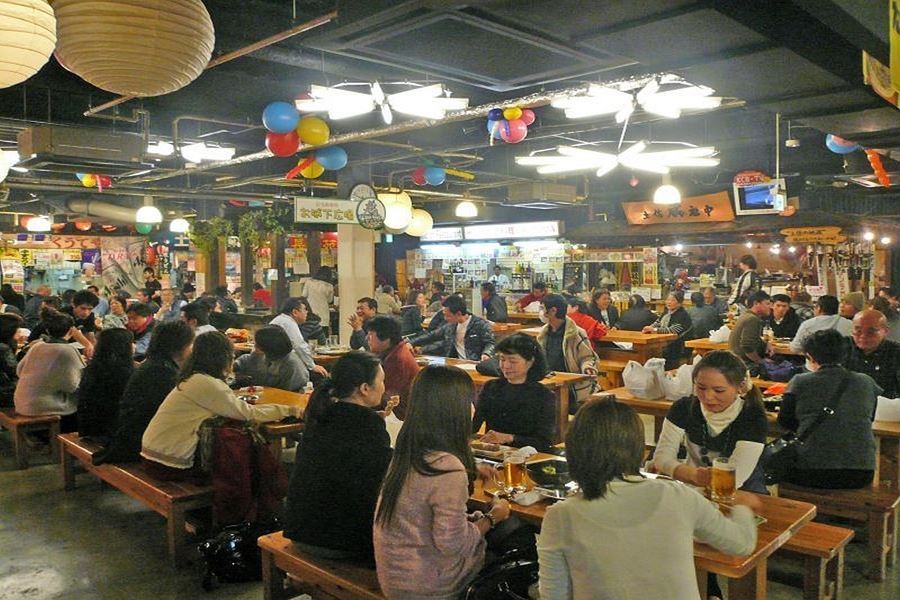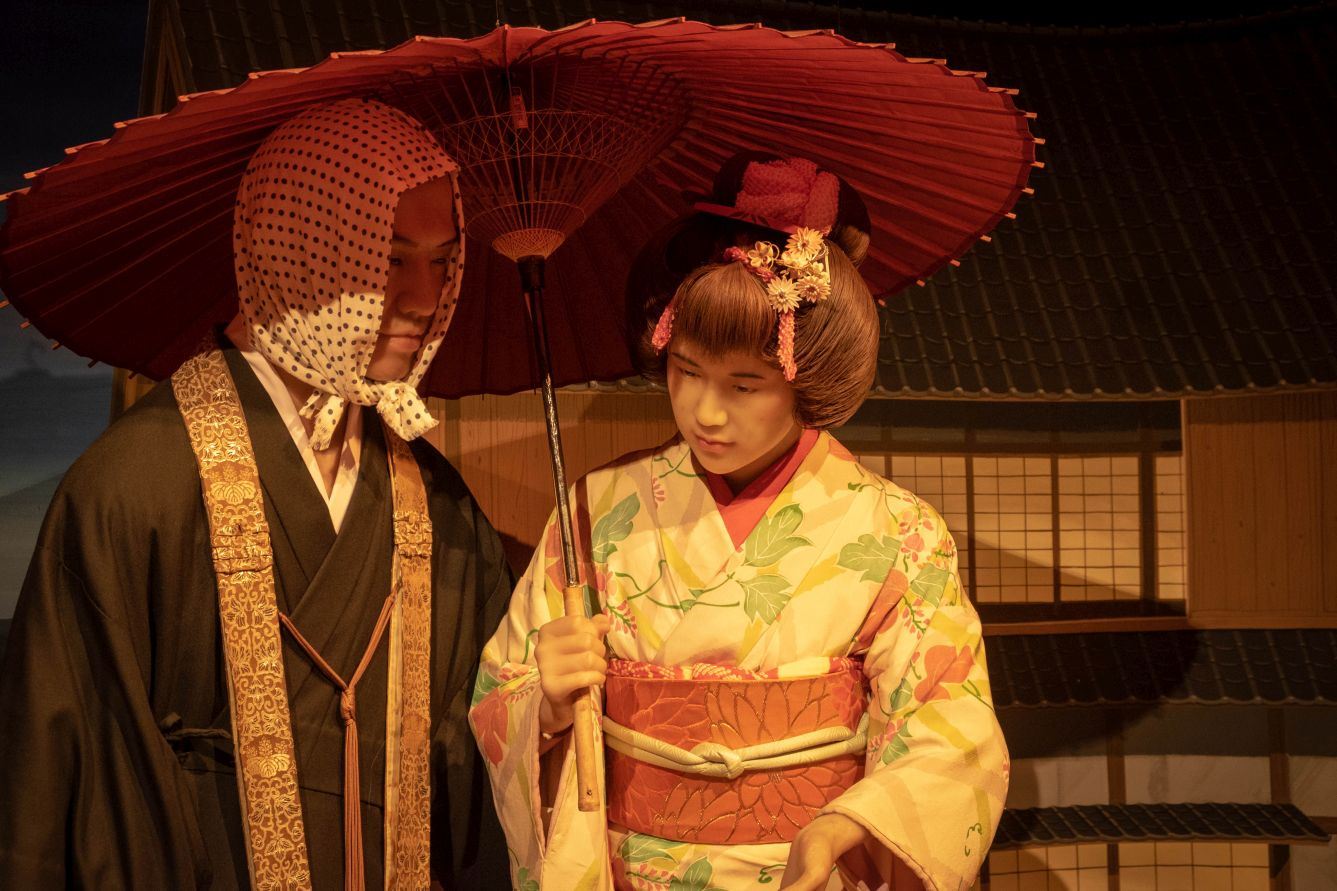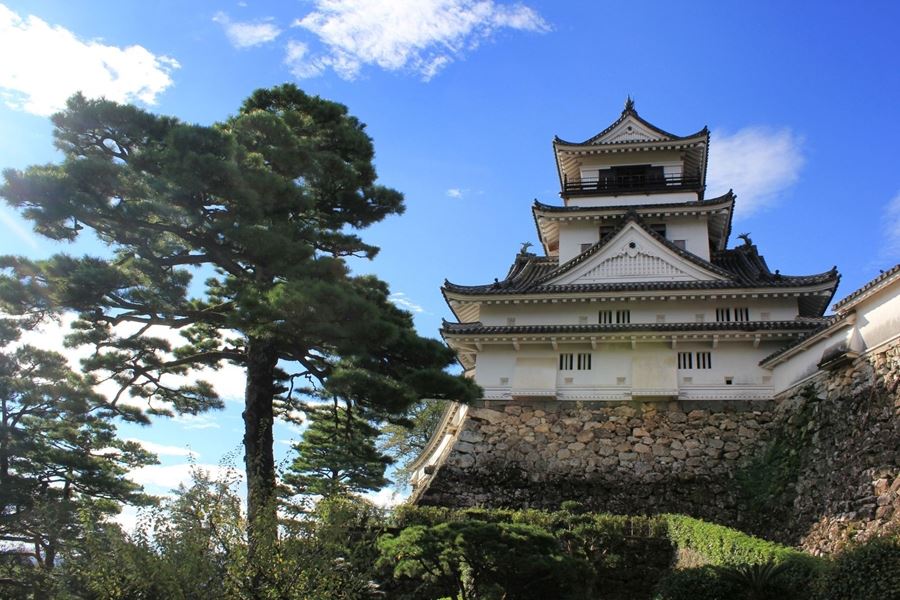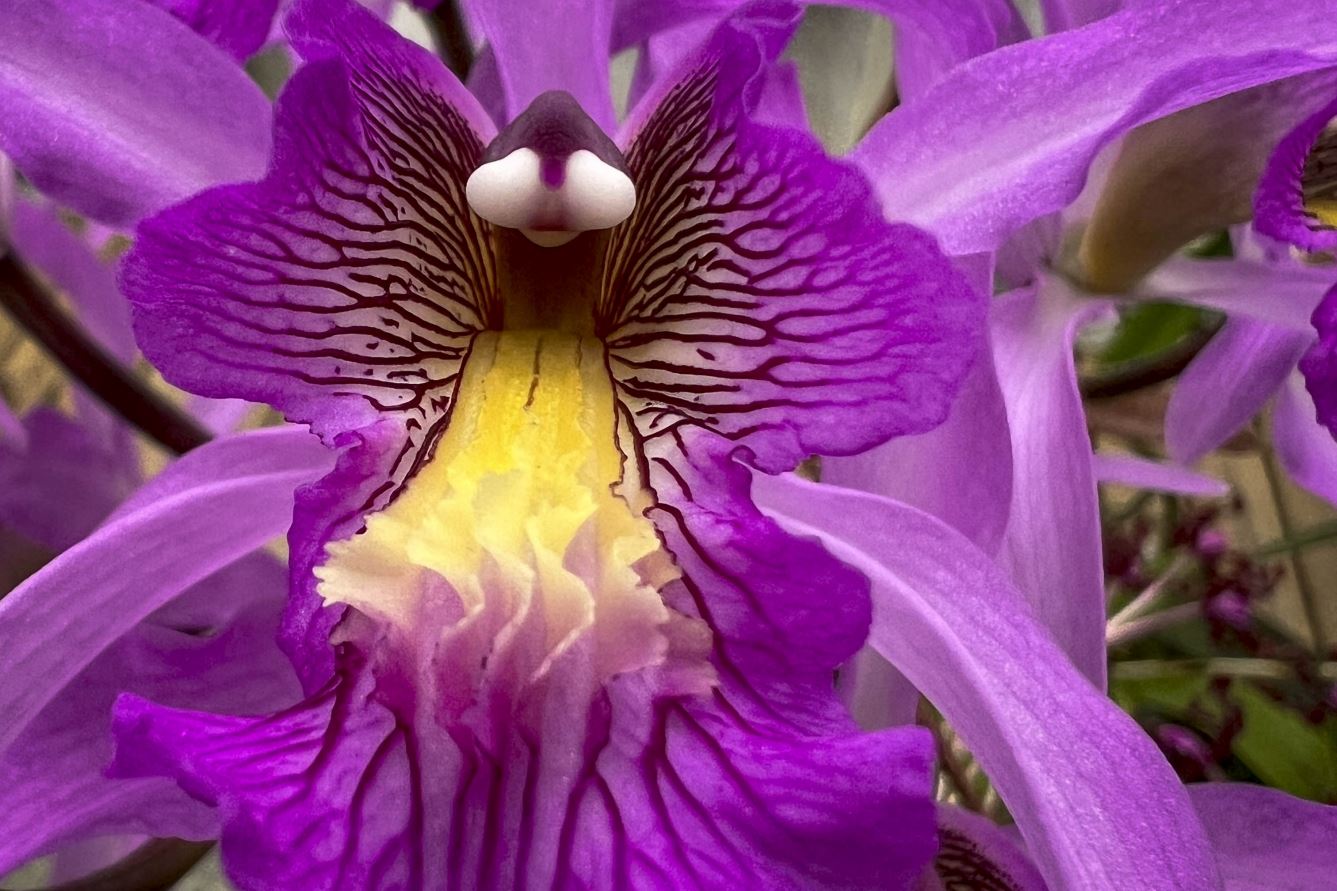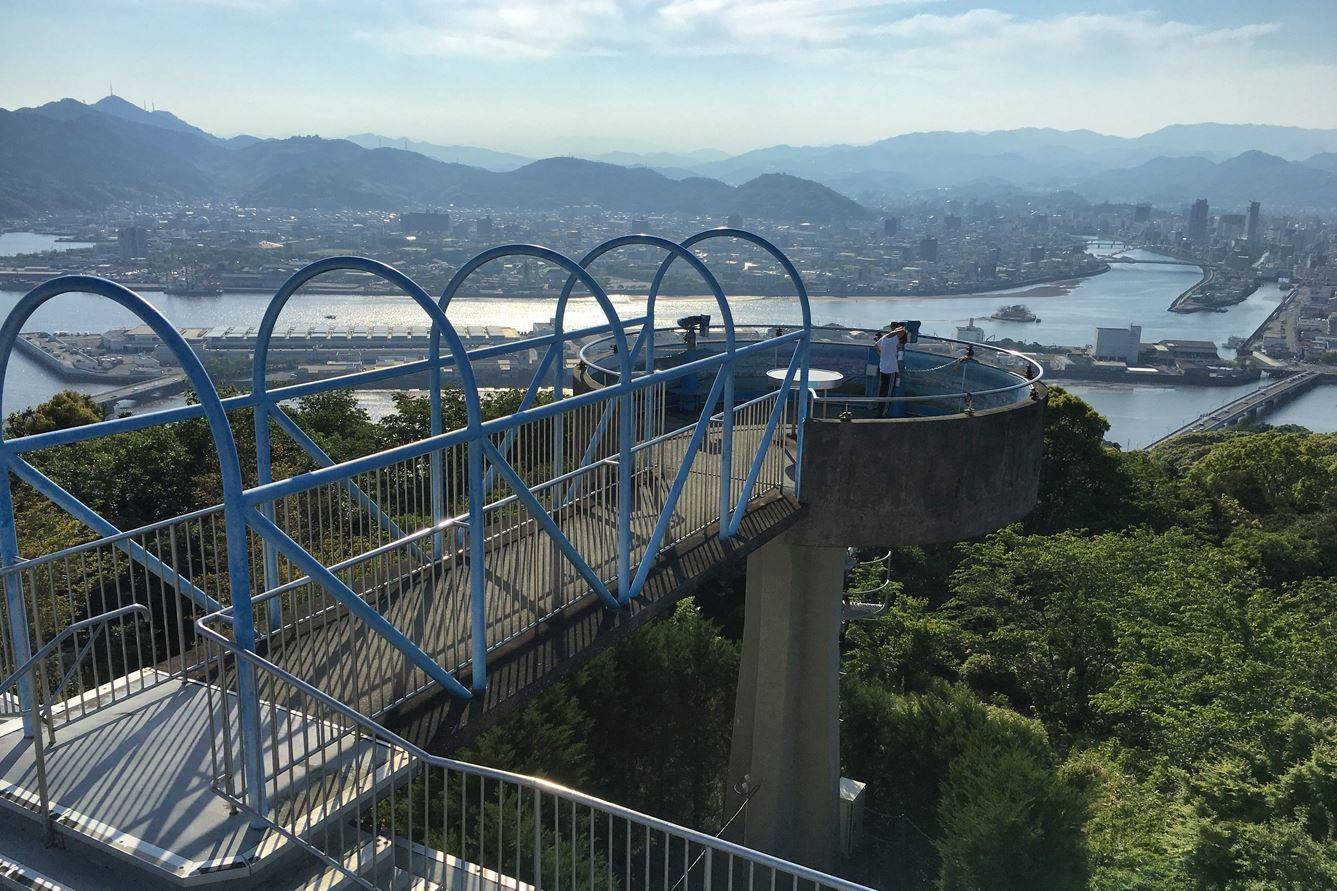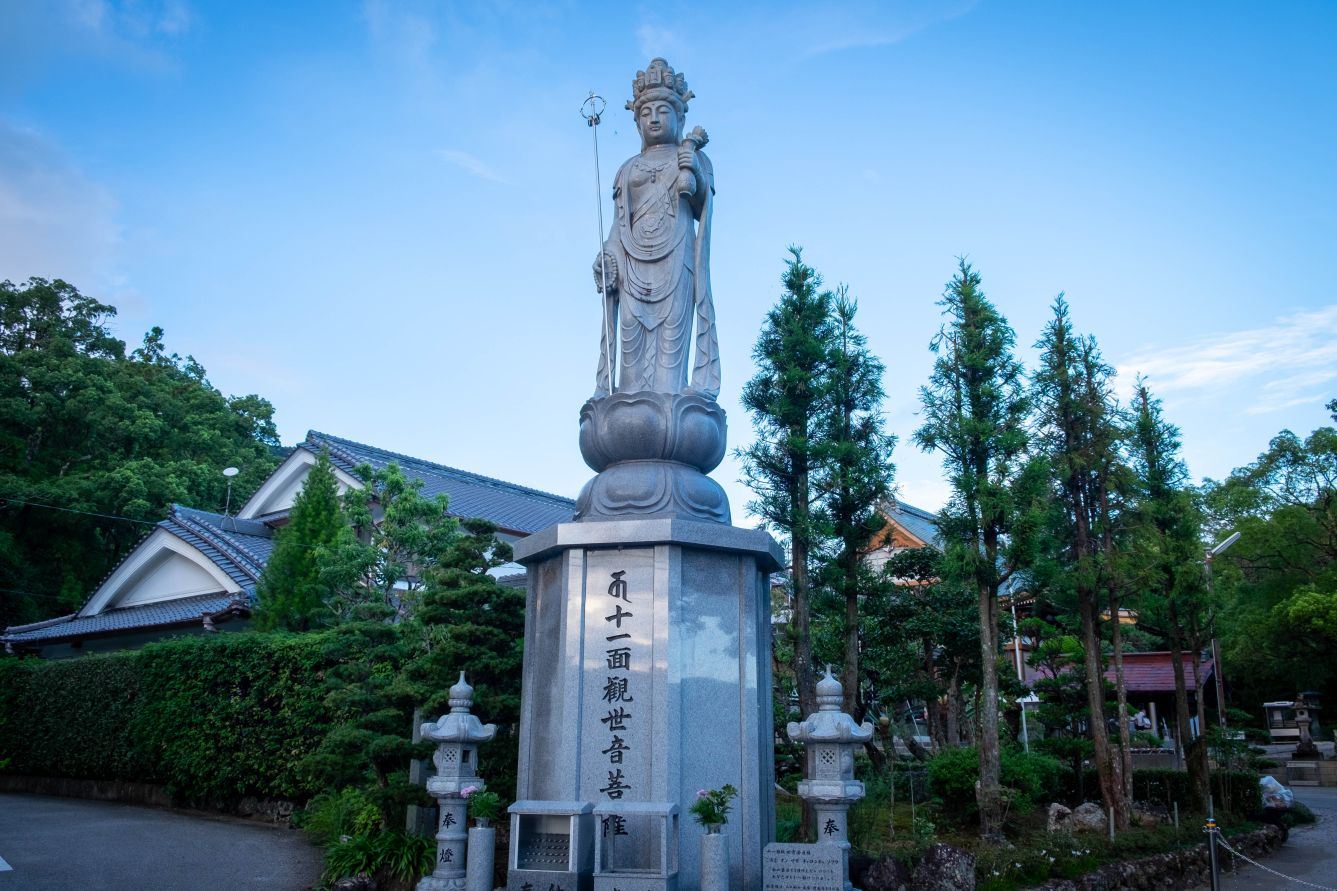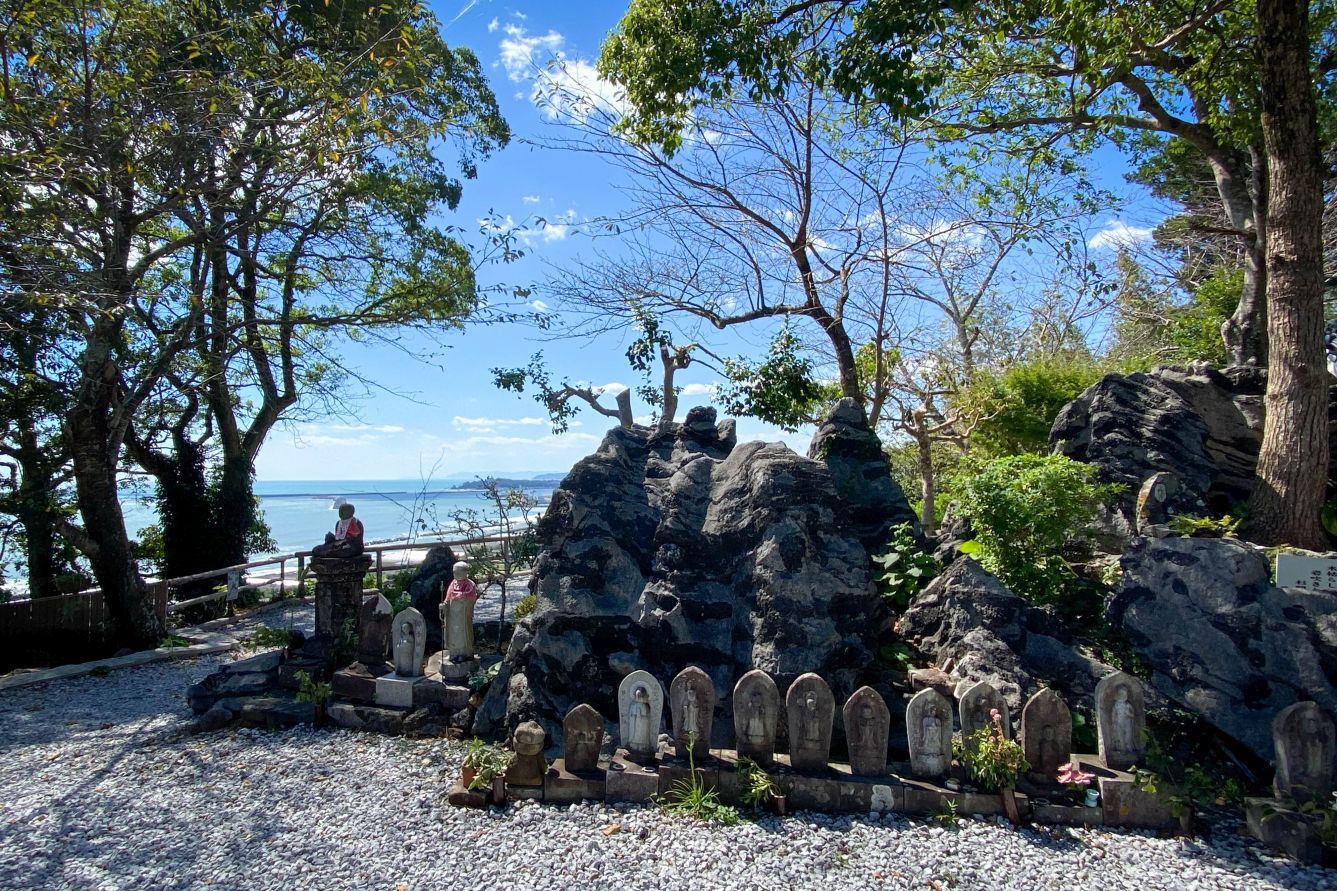Temple 31, Chikurin-ji
Home » Temple 31, Chikurin-ji
Temple 31, Chikurin-ji
Chikurin-ji is temple No. 31 on the Shikoku pilgrimage, or Henro. It’s located on Mt. Godai, a fairly high hill within Kōchi city. Chikurin-ji means ‘bamboo forest temple’, although today, Mt. Godai is more broad-leaf and pine forest than bamboo.
What to see
Chikurin-ji has many beauties. There’s a long approach to the main compound that passes up stone steps through an elaborate two story Niō gate. Beyond the gate, a long path passes through a moss-carpeted approach. This is where the temple originally stood before it was first destroyed. To the right of the path is a Shintō shrine and to the left are some stone Buddhas. Another long flight of steps leads up to the main compound.
The Main Hall is at the right end of the end of the compound. This is also called the Monju Hall because it enshrines Monju, deity of wisdom. It was built in 1644 by Yamauchi Tadayoshi, the second feudal lord of Tosa. Today, it’s the oldest building on the mountain. It’s in the Muromachi period style with a slight influence of Tang architecture. Inside the Main Hall, you can see a series of paintings alluding to the shooting of an arrow by a Genji warrior at a fan raised on a ship by a Heike lady in the Battle of Yashima during the Genpei War. There are also several fine painted mandalas. A red Binzuru figure sits on the veranda. In the middle of the compound stands a statue of Zenzai Dōji, a youth who found enlightenment by learning from all classes of people.
On the other side of the compound is a simple Daishi Hall, also built in 1644 by Yamauchi. Many wooden name cards that Ohenro used to leave as proof of visiting remain on the front lintel. On a raised platform above the Daishi Hall is a red five-storied pagoda. It was built in 1980 of cypress. It leans slightly to the south since wind from that direction dried out the wood, shrinking it.
The stone Jizō in a little shed in front of the pagoda was found buried in the temple grounds. Local people set it up in its current location and prayed to it. Prayers are said to be very efficacious, and the offerings hanging in front of it are testament to wishes granted. In 2010, the western precincts of Chikurin-ji Temple were reborn as Meguri no Mori where there are three stone statues of Buddha enshrined in a stained-glass dome (created in India), wooden and stone bridges, and ponds.
Returning back towards the gate, a path heads the left past a belfry and a treasure house holding statues that were buried at Chikurin-ji to prevent their destruction in the suppression of Buddhism in the early Meiji period. The path leads to a reception hall called the Shoin. This was built in 1816 to accommodate the visits of the feudal lord. It looks out onto two gardens, created by Musō Kokushi, a Zen priest who came to Tosa in 1318 in the latter half of the Kamakura period. This garden, which was built on the mountainside imitates Mount Lu and Lake Poyang in China.
History
Emperor Shōmu dreamt of climbing Mt. Wutai in Shanxi, China and he ordered Gyōki to find a similar mountain in Japan and build a temple there. Gyōki thought that Mt. Godai fit the bill and in 724, he founded Chikurin-ji on the mountain.
Kūkai visited later when the temple had fallen into disrepair and fixed it up. Several times the temple became derelict and was rebuilt by various patrons. It was especially favoured by the Yamauchi, the feudal lords of Tosa. In 1899 the three-storey pagoda of the temple was destroyed by a typhoon.
Interestingly, one of the abbots of Chikurin-ji succeeded in performing the feat of Sokushinbutsu or self-mummification, an exceedingly painstaking procedure involving fasting, meditation and eventually, burial alive with just a breathing tube.
When Buddhism was suppressed in favour of national Shintō, the Buddhist treasures held by the temple were buried for safekeeping in the area where the Shintō shrine stands today.
In the Edo period, Junshin, a priest from Chikurin-ji caused a scandal by eloping with a common woman from Kōchi city.
Information
Name in Japanese: 竹林寺
Pronunciation: chikurin-ji
Address: 3577 Godaisan, Kochi 781-8125
Related Tours

Experience the most beautiful and interesting temples of the Shikoku Pilgrimage in seven days.

A tour for families or friends, staying in the most characterful kominka and ryokan of Shikoku.

Visit the most beautiful and interesting temples of the Shikoku Pilgrimage and walk the toughest trails.


